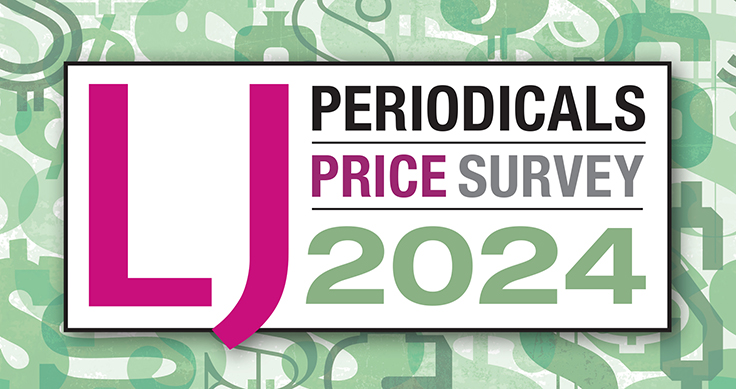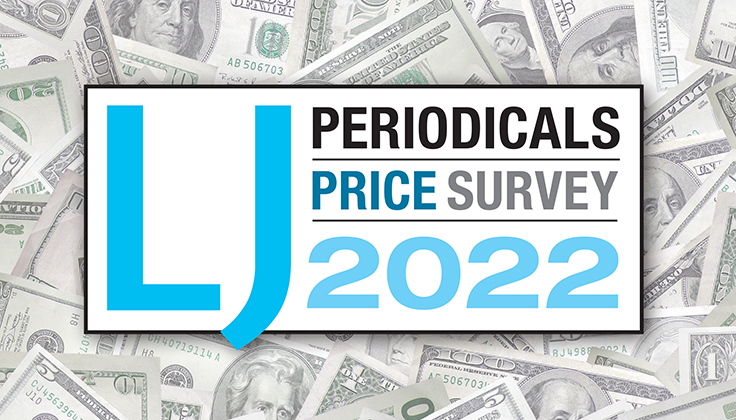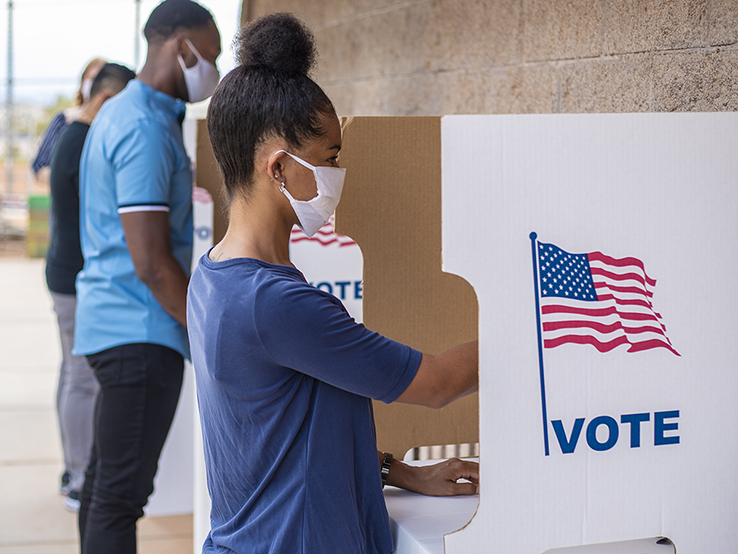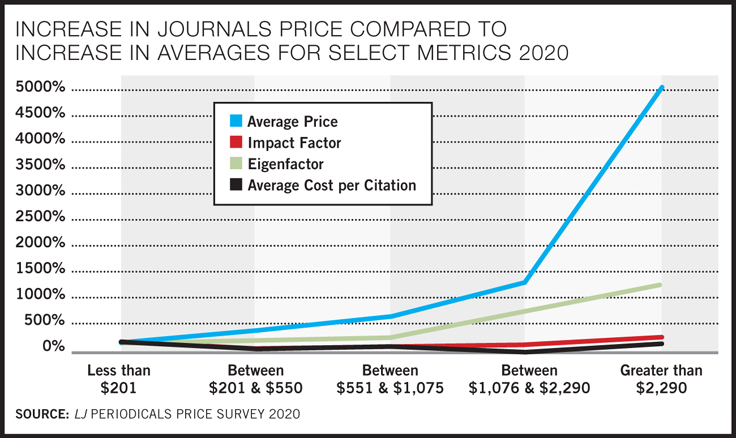63 Results for: "periodicals price survey"
From:
To:
OA, AI, and DEI—Triple Advantage or Triple Threat? | Periodicals Price Survey 2024
Many librarians lauded the development of Open Access (OA) publishing models, which offered, at least initially, to help solve the problem of an unsustainable and inequitable scholarly communications ecosystem while simultaneously addressing a growing interest in diversity, equity, and inclusion (DEI). In the past year, the idea that, with appropriate guardrails, Artificial Intelligence (AI) can also play a role in changing scholarly communications has risen to the fore. But can OA, DEI, and AI ever live up to their promise of an affordable, equitable and sustainable publishing ecosystem?
Going for Gold, Deep in the Red
Can libraries afford open access? LJ’s latest Periodicals Price Survey examines the state of the market.
Are We There Yet? | Periodicals Price Survey 2022
Two years into the pandemic, only flat budgets and price increases seem predictable.
The New Abnormal: Periodicals Price Survey 2021
Having spent over a decade adjusting to a “new normal” of serials inflation, harsh budget cuts, and a redirection of spending from collections to services, arguably few if any libraries were prepared for the turmoil wrought by a pandemic. We have shifted to a new abnormal. How will libraries survive and thrive after the pandemic subsides? What might our new abnormal look like?
The Price of a Pandemic | Budgets and Funding 2021
Budgets, modestly up, reflect pre-COVID planning, but how they’re spent has changed drastically: Circ, hours, and staffing see major pandemic drops while tech, e-content, and safety spending rise.
State and Local Selections | Notable Government Documents 2019
This year's selections of notable state and local government documents, from Colorado wildlife to Oregon sea urchins, North Dakota blizzards to North Carolina DWI offenders.
Ithaka Library Directors Survey Reflects a Different Time—and Offers Clues for What May Lie Ahead
When the research team at Ithaka S+R closed their survey of academic library directors at the end of last year and began to examine the responses, they had no idea that within three months the academic library landscape would look entirely different.
Costs Outstrip Library Budgets | Periodicals Price Survey 2020
Higher education continues to grapple with an uncertain future of flat or declining student enrollment and mounting financial pressures. Library budgets are for the most part flat or diminishing, leaving libraries to yet again battle the terrible twins of cost inflation and revenue stagnation. Many libraries are cutting continuing expenditures by cancelling or breaking up journal packages and buying only those titles for which use or demand justifies the price. Others are aggressively renegotiating contracts with publishers to reduce ongoing costs.
University of Iowa Cancels $600K in Subscriptions
In the wake of state funding cuts, the University of Iowa (UI) Libraries has identified more than 800 journal, database, and ebook subscriptions that it will cancel over the upcoming academic year. Library administration and liaisons worked with faculty to select subscriptions to be eliminated, targeting—and achieving—approximately $600,000 in savings. Faculty, staff, and students ultimately commended UI Libraries for its transparency and adherence to best practices throughout the process.
Roundup (April 6, 2019)
ALREADY A SUBSCRIBER? LOG IN
We are currently offering this content for free. Sign up now to activate your personal profile, where you can save articles for future viewing










